Google Nexus 4 Review - Google's new Flagship
by Brian Klug on November 13, 2012 8:45 AM EST- Posted in
- Smartphones
- LG
- Android
- Mobile
- APQ8064
- Nexus 4
- Android 4.2
- MDM9215
The Nexus 4 is based around a 1.5 GHz Qualcomm Snapdragon S4 Pro SoC, the quad core Krait APQ8064 with Adreno 320 GPU, which is still built on a 28nm process. The combination of APQ8064 for AP and MDM9x15 for baseband is Qualcomm's Fusion 3 platform, and the Nexus 4 and Optimus G are the first phones to market based on that platform. This is a relatively unique opportunity for Nexus, which until recently wasn't really first to market with the latest and greatest silicon.
A while ago we posted our Nexus 4 and Nexus 10 performance preview. At that point we still had a lot of testing to perform, and many people noted that the Nexus 4 performance was far behind the LG Optimus G despite it being based on the same platform. Later, some people noticed that I had uploaded another set of results from GLBenchmark 2.5 to the online result browser with much better performance. The difference wasn't some over the air software update but rather that I was running some of the tests with the Nexus 4 in a ziplock bag inside the freezer to mitigate any condensation problems, and simultaneously nail down any possible thermal throttling.
I've re-run everything and can confirm obviously that there was thermal throttling going on affecting some of the results, and have included the new results wherever there was a deviation from previous. For those wondering why the LG Optimus G wasn't affected in spite of it having the same platform, the reason is because the results from the Optimus G were run in parts due to some instability affecting its ability to run a complete set of tests without crashing. The Nexus 4 has newer drivers that don't crash during a full GLBenchmark 2.5 run but as a result run the device long enough for thermal throttling to kick in.
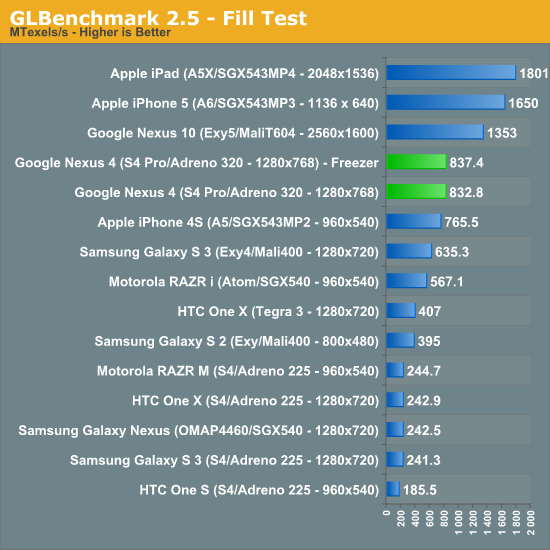
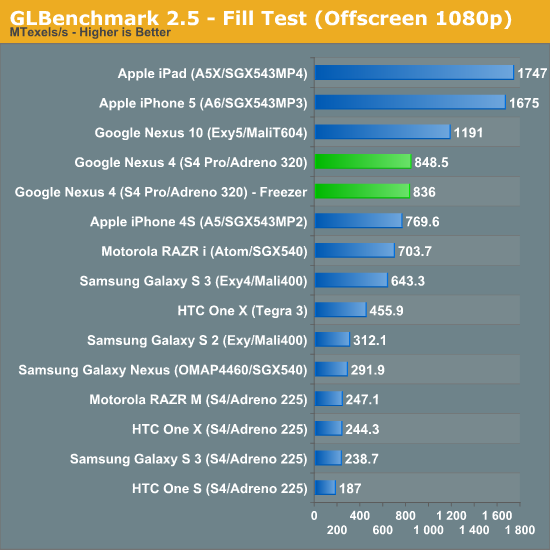
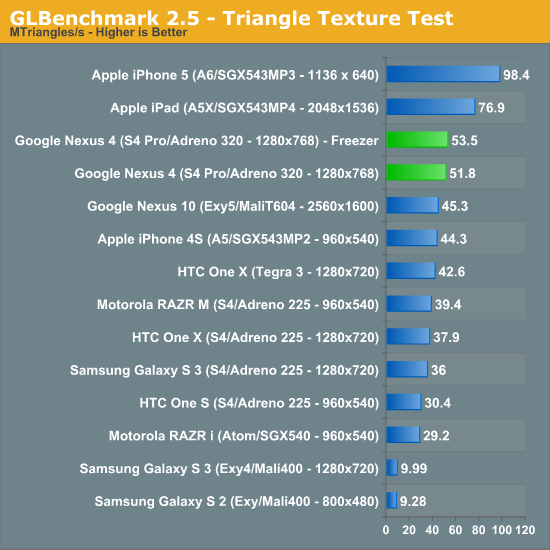
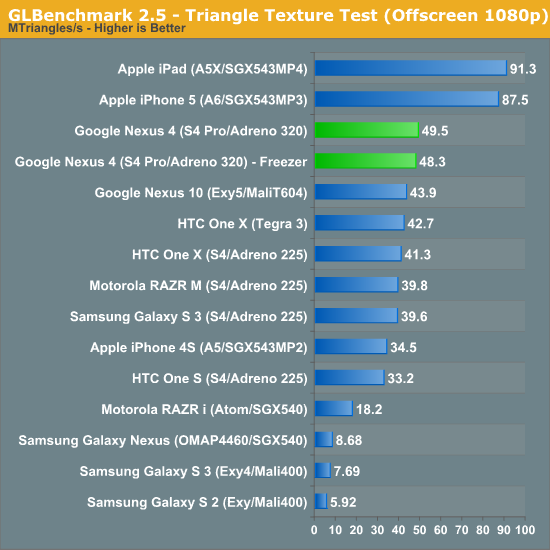
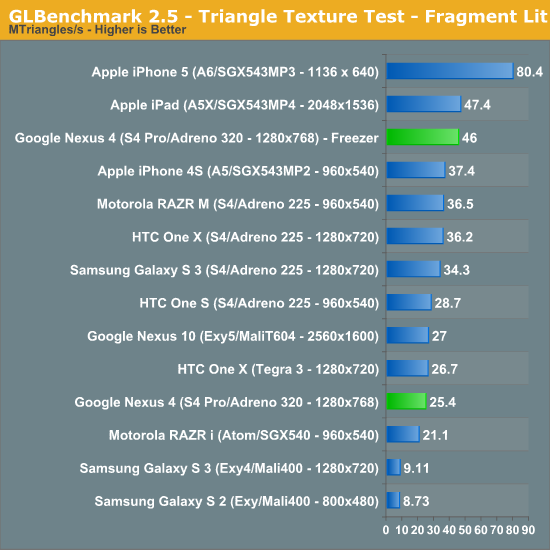
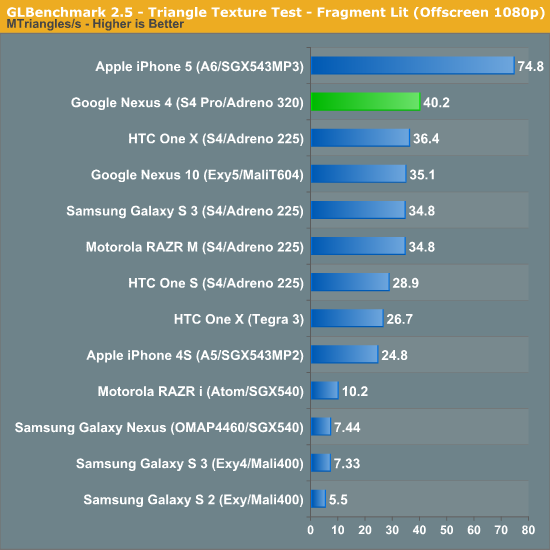
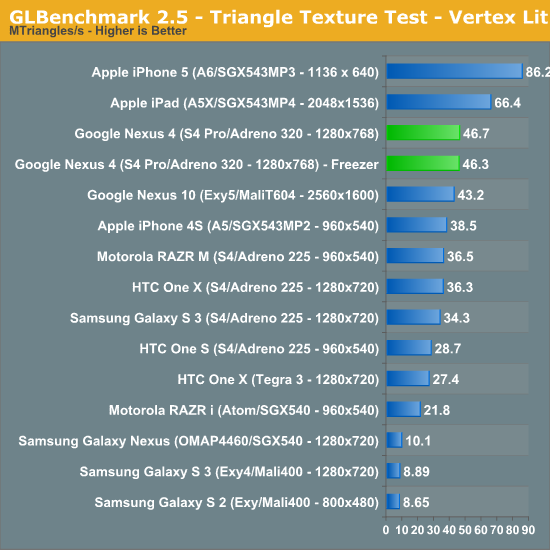
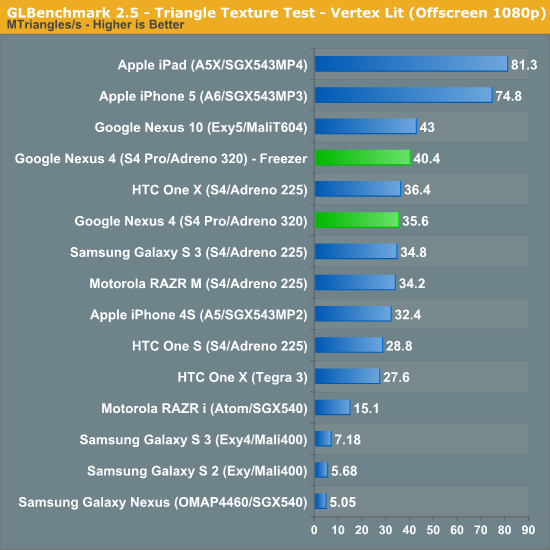
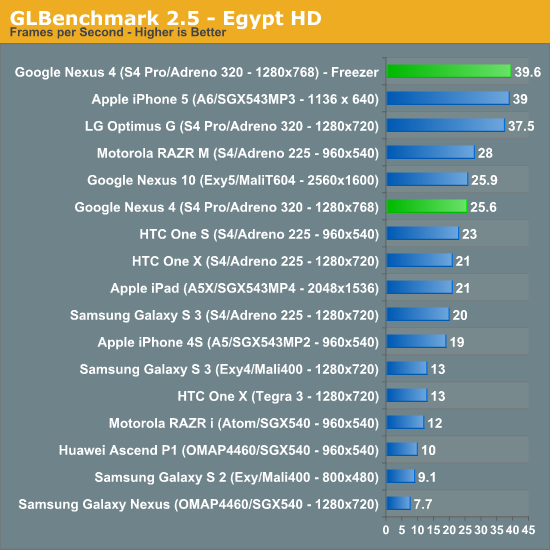
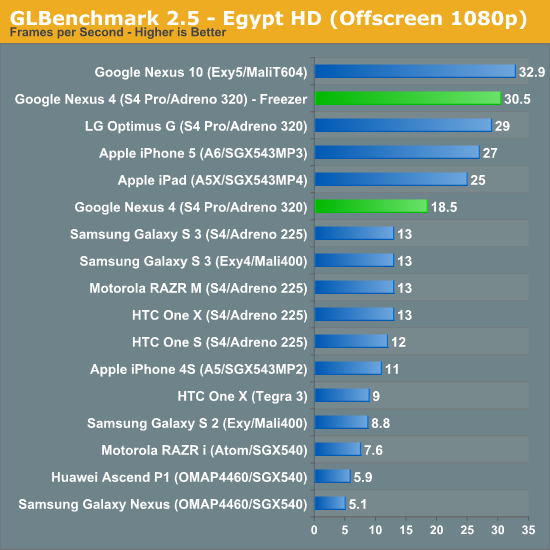
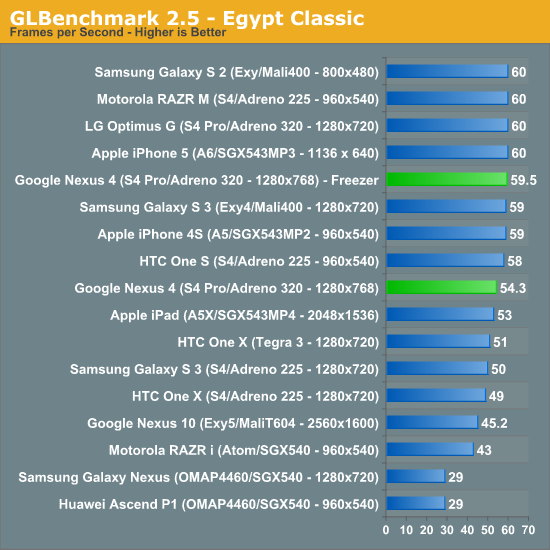
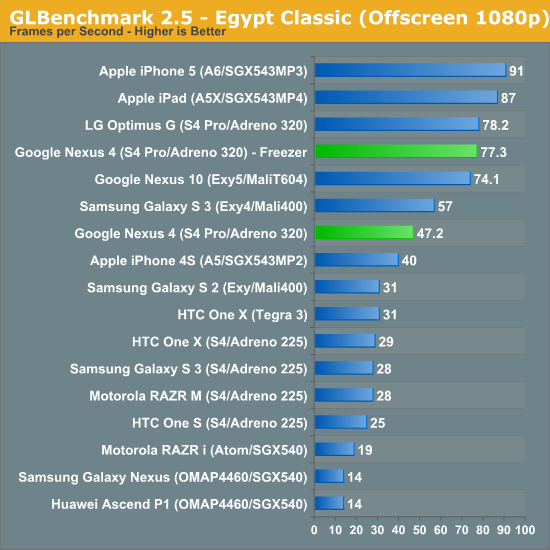
The result of the tests in the freezer results that are much closer to what we'd expect based on the APQ8064 MDP/T runs and the Optimus G numbers I saw in Korea.
When it comes to the CPU side of things there were results also affected by thermal throttling. I spaced some of those runs out (unintentionally) enough that performance didn't change, but for other things it did affect performance. I can't tell what GPU clocks end up being when the SoC decides to throttle, but it is possible to nail down what CPU performance state APQ8064 settles down into when there's throttling going on by looking at the state tables.

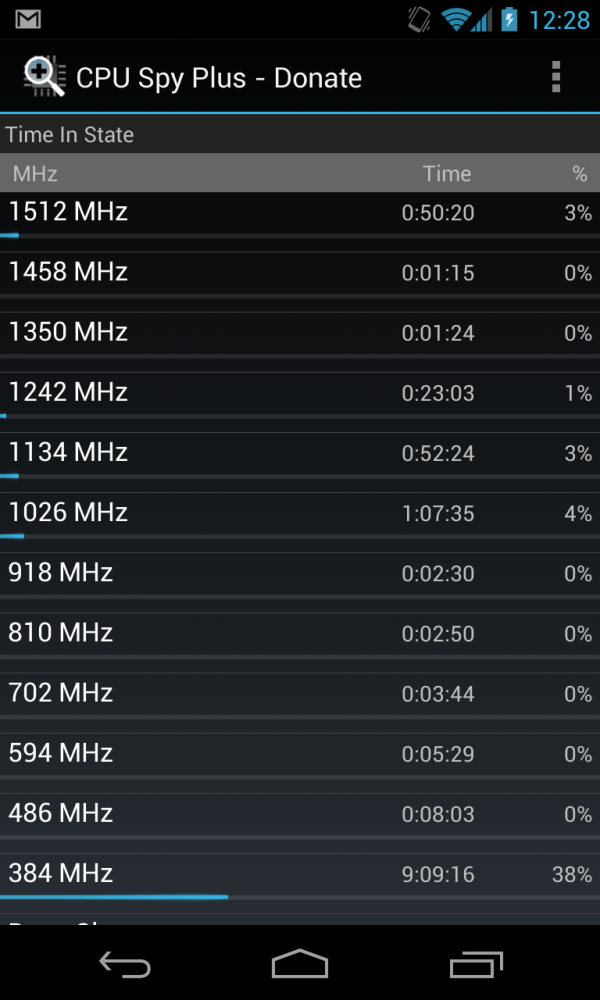
Left - 1.134 GHz during throttling (running tests), Right - All the performance states
I can see the Nexus 4 not use any of the performance states above 1134 MHz when it's getting hot, as shown in the images above. I've tweeted a link to the pastebin for thermald.conf which I believe configures the thermal cutoffs and will be interesting to kernel hackers trying to play with these values.
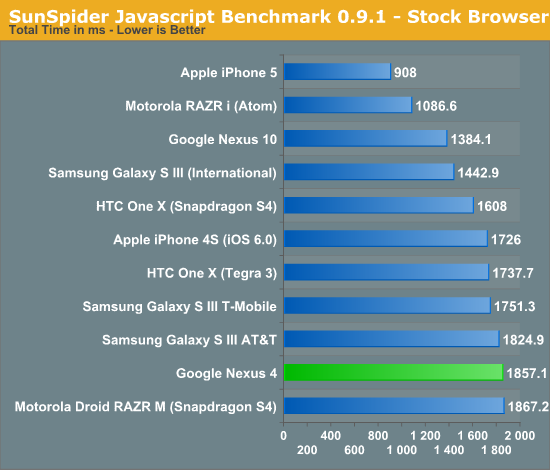
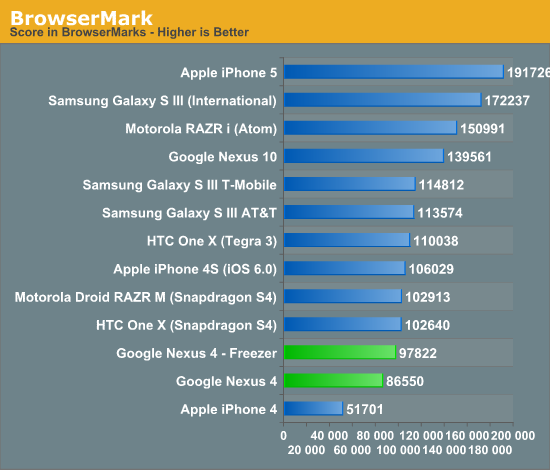
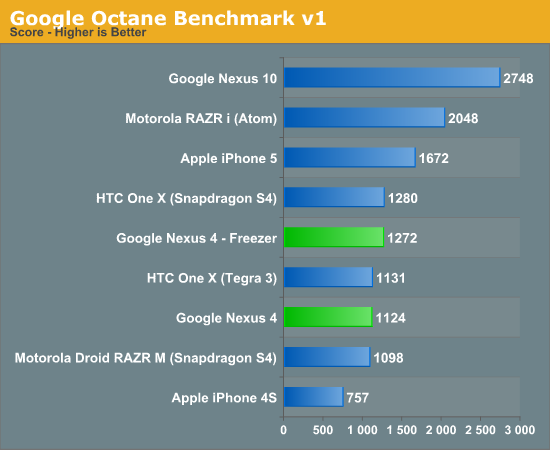
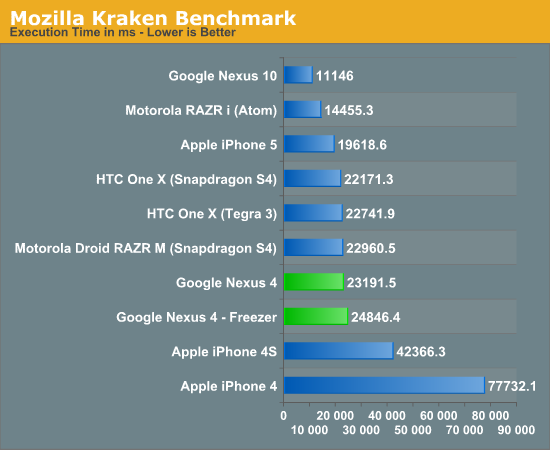
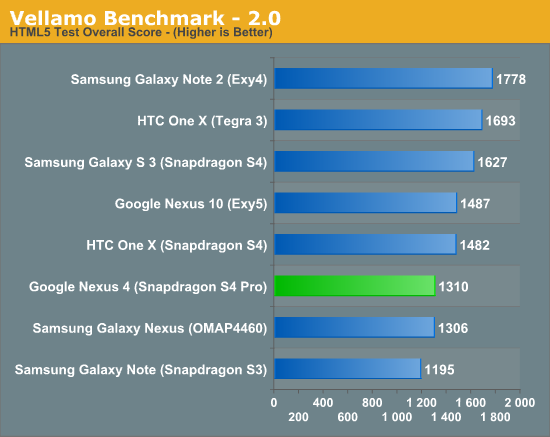
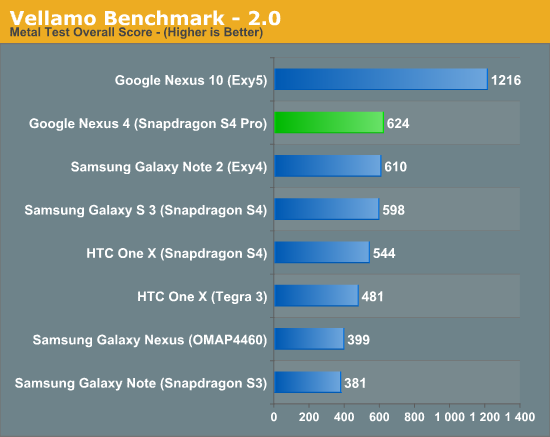
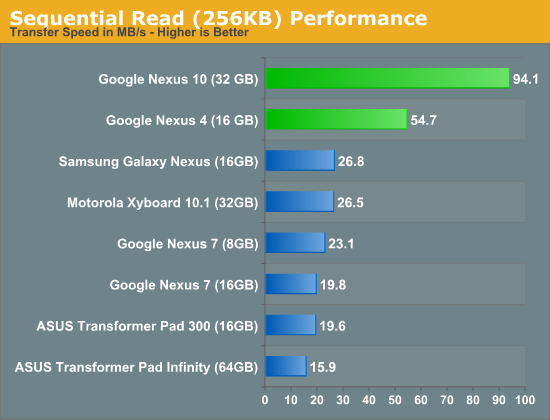
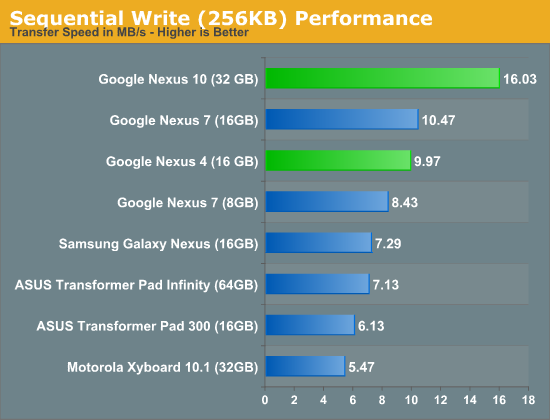
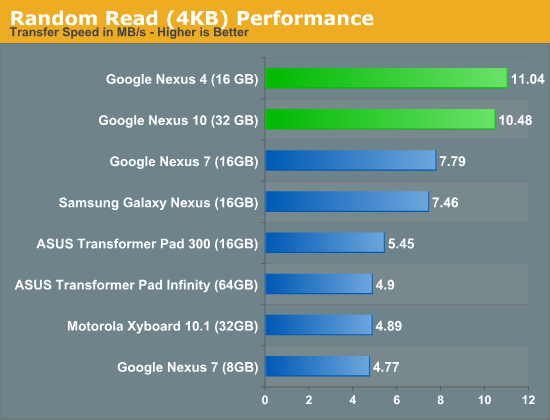
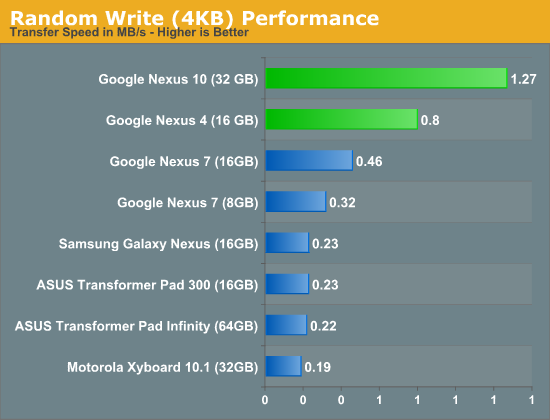
Our CPU performance side is unfortunately still dominated by JavaScript performance tests. The story there is that the Nexus 4 ships with Chrome (and originally shipped with a newer build of Chrome than what was on the market - we were running that updated version all along) and thus the mainline version of the V8 JavaScript engine. OEMs perform their own optimizations to the V8 library, and try to upstream whatever they can into the main project, but in the case of Chrome for Android that means V8 sans secret OEM sauce.










188 Comments
View All Comments
chrnochime - Tuesday, November 13, 2012 - link
I did and it just mentioned that it gets streaks on the bottom genius. Did YOU RTFR?Rits - Tuesday, November 13, 2012 - link
Do you know what brittle means? Streaks? Where did you read streaks? I read "sleeks" which are fine scratches (if you'd RTFR).tuxRoller - Tuesday, November 13, 2012 - link
According to other reviews, yes, it is quite brittle (the verge dropped it from a table to a hard wood floor and a spidery crack emerged from the corner to the camera module and that wasnt the onlg review that had problems with durability).A case is highly suggested.
Impulses - Tuesday, November 13, 2012 - link
That's a big turnoff IMO. I'd love to see a poll on AT to find out what percentage of readers actually uses cases or not tho...I find myself tempted every year to go caseless but I never end up doing it for several reasons. Slim TPU cases allow me to put the phone down screen first without worrying about it, and it protects the camera too. Cases also help mitigate impact from drops and protect my resale value too...
Basically I could care less for in hand feel, gonna be feeling the case anyway. I'd rather just have an all around sturdier phone. I can appreciate the design of something like the One X over most Samsung designs but it's not a huge deal to me.
Hell I don't even think my EVO LTE is as fugly as some make it out to be, and the metal build seems rather solid.
tuxRoller - Wednesday, November 14, 2012 - link
IIRC, the verge mentioned something about Google releasing some kind of case that mainly protects the corners (I think they said it was something like the case apple put out for the iphone 4), but I could be mistaken.I've a nexus s and I've never used a case and the phone looks pretty much brand new (the screen did break awhile back after cat shot [as in, he was running, phone was in the way] the phone onto ceramic tile floor in the kitchen...so, about as nasty a fall as a phone will take). For the nexus 4, which I'm going to get, I will almost certainly get a case.
About the build quality, something that others have mentioned, and reviewers frequently forget (though not so much here), is that in hand feel has relatively little to with how well the device will survive impacts.
The iphone 4/s had great in hand feel but the damn thing is brittle as all hell.
Samsung phones, while "plasticy", survive drops well (excepting the latest generation, apparently). However, you should keep in mind I actually like the in-hand feel of my nexus. It has almost no sharp angles and sits so comfortably in hand, and slides in and out of my pocket so easily.
Baroobob - Tuesday, November 13, 2012 - link
"We now have a form factor of device for every two inches of diagonal difference."Should be every three inches assuming you're referring to Nexus 4, 7, 10.
Zink - Tuesday, November 13, 2012 - link
I was confused at well.andybryant - Tuesday, November 13, 2012 - link
Does it support USB OTG without needing 3rd-party software or re-flashing?i.e. to allow me to read/write to an external USB key or SD card in reader.
MadMan007 - Tuesday, November 13, 2012 - link
Good question! If so, it alleviates much of the 'no SD slot' pain.thesavvymage - Tuesday, November 13, 2012 - link
yeah this is something I'd like to know as well. I still bought it, but the only thing I'm having worries about is being able to take a usb full of movies on it for a flight or something. A super short OTG cable and one of those USB drives that sticks out like 2mm would be great.In the end, if not supported out of the box (like the N7) then ill just root and use stickmount